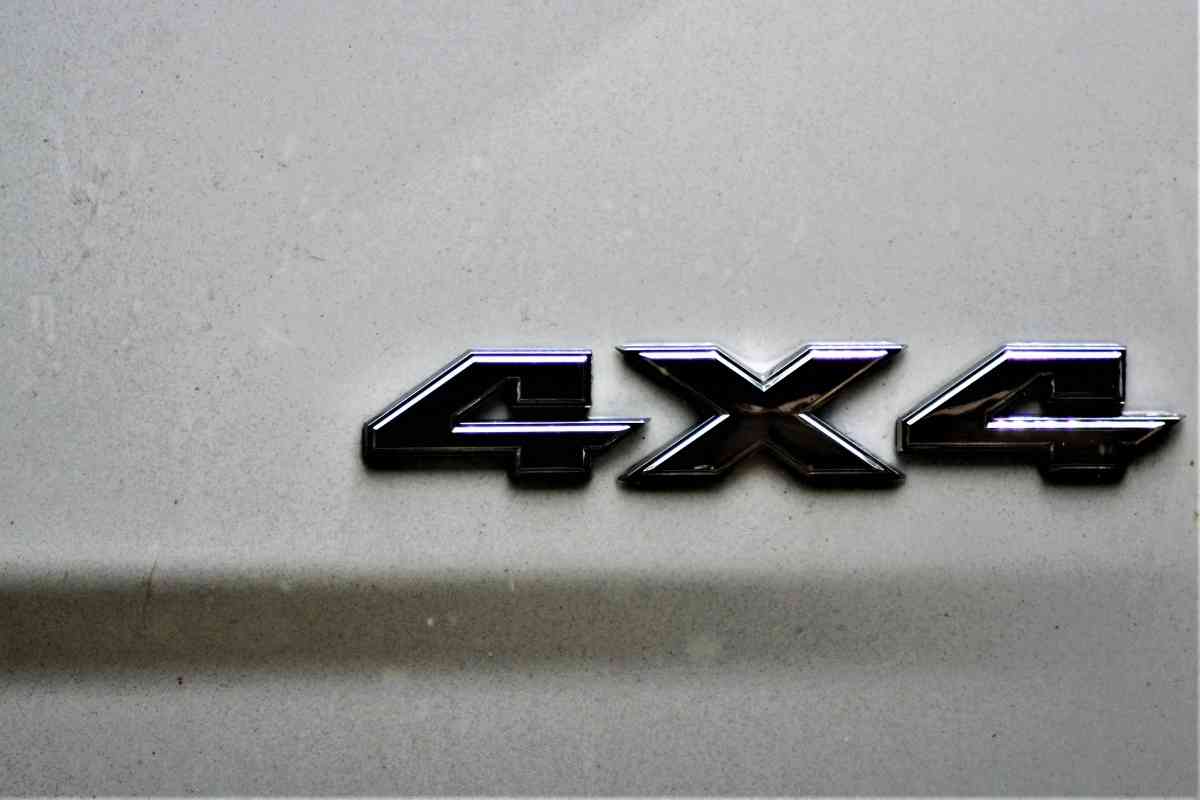All-Wheel Drive Systems: Max Traction for Your Vehicle
All-wheel drive systems (AWD) have revolutionized the way vehicles tackle varying road conditions by providing superior traction and handling. These systems harness the power of the engine and distribute it across all four wheels, enabling vehicles to maintain grip in slippery situations such as rain, snow, or even off-road terrain. The adoption of AWD technology across a broad spectrum of vehicles, from rugged SUVs to sleek sedans, has highlighted its versatility and appeal to drivers seeking a safer and more stable driving experience.

Understanding AWD technology begins by dissecting the intricate web of components that work collectively to optimize wheel grip and vehicle dynamics. This network includes the central differential, clutches, and advanced electronic control systems that manage power distribution. Each component’s design and function are essential in AWD systems, contributing to a vehicle’s ability to adapt to different driving conditions automatically or with selective driver input.
All-wheel drive systems are not to be confused with four-wheel drive (4WD) configurations, which are typically used in more demanding off-road environments. While there are similarities in the concept of power distribution to all four wheels, AWD and 4WD systems differ in operation and vehicle application.
Key Takeaways
- AWD provides enhanced traction across various surfaces.
- The technology consists of specialized components working in unison.
- AWD differs from 4WD in operation and usage.
History of All-Wheel Drive Systems

All-wheel drive (AWD) systems have a storied past, intertwined with the evolution of transportation. The concept of powering all four wheels for better traction and control surfaced back in 1893, when it was first patented. It took another decade before this idea grew into a tangible application, with the emerging technology being further refined over the years.
In North America, the term AWD became distinct, with manufacturers like General Motors producing vehicles with these systems as early as the 1930s. AWD’s early years were shaped largely by efforts to tackle tough terrain and improve stability, pushing innovations and variations in the automotive world. This led to enhanced designs that increasingly focused on optimizing performance for both off-road and on-road conditions.
Today, you can find AWD across a wide range of vehicles. From rugged, off-road adventurers to sleek city cruisers, AWD’s inclusion promises improved handling and safety. Whether battling icy streets or taking on rain-slicked highways, AWD has become a trusted companion for drivers seeking an edge against challenging conditions.
Mechanical Principles of AWD
All-wheel drive (AWD) systems are designed to enhance traction in a variety of driving conditions. At their core, mechanical AWD systems distribute power to all four wheels using a series of differentials—center, front, and rear. These differentials allow the wheels to rotate at different speeds, which is crucial for maneuvering and turning.
Here’s a breakdown of how power flows in a typical mechanical AWD system:
- Engine torque is transmitted to the transmission.
- The center differential receives the power and splits it between the front and rear axles.
- Each axle’s own differential further divides the torque between the respective wheels.
Modern AWD vehicles may employ a sophisticated approach where electronic sensors gauge wheel traction and instruct the differentials to adjust power distribution accordingly. For instance, when a wheel slips, systems like Toyota’s AWD can redirect torque to the wheels with the most grip. This technology provides smoother handling and optimized traction in challenging conditions.
Mechanical AWD’s most significant advantage is its effectiveness in slick conditions—whether you’re navigating through rain, snow, or mud. Your vehicle can adapt to changes in road surface, offering a safer and more stable driving experience.
However, mechanical systems can add weight and complexity to a vehicle and may impact fuel efficiency due to the additional rotating mass and drivetrain resistance involved.
Types of AWD Systems

All-wheel drive (AWD) systems are integral to enhancing traction on various driving surfaces. They are designed to automatically distribute power to each wheel for optimal grip and control.
Full-Time AWD
Full-Time AWD systems constantly send power to both the front and rear wheels to ensure maximum traction under all driving conditions. This type of AWD can be beneficial when you frequently encounter adverse weather or consistently drive on challenging terrains.
Part-Time AWD
Part-Time AWD, also known as selectable AWD, gives you the flexibility to switch between two-wheel drive (2WD) and AWD. This system is ideal if you’re looking to improve fuel efficiency when AWD isn’t necessary, as running in 2WD mode can reduce the drivetrain’s energy demand.
Automatic AWD
Automatic AWD systems operate primarily in two-wheel drive to save on fuel. However, they automatically engage AWD when the system detects slippage, providing you with improved traction only when needed, without any manual input.
AWD System Components
Understanding the components of an all-wheel drive (AWD) system can help you appreciate how it provides enhanced grip and stability across various driving conditions.
Let’s take a closer look at the core parts that make up this sophisticated drivetrain technology.
Center Differential
The center differential plays a crucial role in an AWD system by allowing the front and rear axles to rotate at different speeds. This is essential for reducing drivetrain stress and improving handling during turns.
It’s also responsible for distributing torque between the front and rear wheels, which can vary depending on the vehicle’s design and driving conditions.
Transfer Case
A transfer case is found primarily in 4WD and AWD systems. In an AWD vehicle, it’s responsible for transferring power from the engine to both the front and rear axles.
By managing the distribution of torque, the transfer case helps ensure you have traction when you need it, without the need for driver input.

Power Take-Off Units
Power Take-Off Units (PTUs) are found in some AWD systems and are vital for transferring power from the main transmission to the other axle, usually in a transverse engine setup.
PTUs help provide the necessary power distribution that allows for AWD capabilities, especially in vehicles designed for efficiency and space-saving considerations.
Benefits of All-Wheel Drive
When you’re behind the wheel, having an All-Wheel Drive (AWD) system can make a significant difference in your driving experience.
With benefits like improved traction in various conditions and added stability, AWD systems can provide you with a sense of security, regardless of where your adventures take you.
Enhanced Traction
AWD vehicles are known for their ability to maintain better traction by distributing power to all four wheels.
This is particularly beneficial when you’re driving on slippery roads as each wheel can respond to available grip. Whether you find yourself on a rainy city street or a snowy mountain pass, the AWD system adjusts power to the wheels with the most traction.

Improved Stability
With AWD, you also enjoy improved stability during acceleration, because the power is not limited to just one set of wheels.
This means that your car can deliver a smoother and more stable ride, particularly in corners. Crucially, this can help reduce the likelihood of oversteer or understeer, which is especially valuable if you find yourself unexpectedly in inclement weather.
Better Off-Road Capability
If you venture off the paved path, AWD also enhances your vehicle’s off-road capability.
By actively sending power to the wheels that need it the most, AWD systems ensure that you have the traction necessary when driving on less stable surfaces like mud, sand, or gravel. This makes AWD-equipped vehicles a great companion for off-road exploration or getting to remote destinations.
AWD vs. 4WD Systems
When you’re navigating the car market for a vehicle that can handle a variety of terrains and weather conditions, all-wheel drive (AWD) and four-wheel drive (4WD) systems likely come to mind. It’s crucial to understand their differences so you can decide which is better suited to your driving needs.
AWD systems are known for providing power to both the front and rear wheels automatically. The system decides when to send more power to the wheels that have the most traction. This technology is ideal if you frequently face mixed road conditions or light off-road situations.
On the other hand, 4WD, also referred to as 4×4, typically offers a selection between driving in two-wheel drive mode for normal conditions and a 4WD mode for challenging terrain. 4WD systems are often found in trucks and SUVs designed for serious off-road use.
Here’s a quick breakdown of both systems:
| Feature | AWD | 4WD |
|---|---|---|
| Traction | Continuous | Selectable |
| Handling | Road-centric | Off-road focused |
| Complexity | Moderate | More complex |
You’ll find that AWD can provide a more seamless driving experience, as discussed on Edmunds. Meanwhile, 4WD gives you control when you need it, making it suitable for the adventurous driver tackling rough terrain as highlighted by Car and Driver.
Remember, the choice between AWD and 4WD should align with where and how you drive.
AWD in Different Vehicle Types
The versatility of all-wheel drive systems is best appreciated when considering how they enhance the performance and safety of various vehicle types. From nimble cars to robust trucks, AWD plays a pivotal role in the traction and handling of these vehicles.
AWD in Cars
In cars, AWD systems provide improved grip and stability, especially in adverse weather conditions. Sedans like the Subaru Legacy offer sophisticated AWD capabilities that ensure power is intelligently distributed to the wheels with the most traction.
This results in better cornering and acceleration, as seen with systems explained by Car and Driver.
AWD in SUVs
For SUVs, AWD is almost a necessity for those who regularly face challenging terrains or weather. Modern systems not only offer on-road confidence but also off-road competence.
For instance, vehicles such as the Land Rover Range Rover come with advanced AWD systems capable of tackling rough landscapes with ease, highlighted by the insights at Autotrader.
AWD in Trucks
Lastly, AWD in trucks provides immense utility for towing and hauling over inconsistent surfaces. Pickup trucks leverage AWD for superior control and power delivery; trucks like the Ford F-150 Raptor are designed to perform under demanding conditions without sacrificing traction, reflecting MotorBiscuit.com‘s AWD evaluations.

Control Systems for AWD
When you’re navigating rough terrain or slick roads, the control systems in All-Wheel Drive (AWD) vehicles ensure you maintain grip and stability. Here’s how they do it:
Traction Control Systems
Traction Control Systems (TCS) in AWD vehicles are vital for your safety. They prevent wheel spin by reducing engine power or applying brakes to specific wheels.
When your car detects slippage, the TCS jumps into action, helping maintain proper traction by distributing torque to the wheels with the most grip. It’s a sophisticated form of managing power that’s crucial for maintaining stability in adverse conditions.
Electronic Stability Control
Electronic Stability Control (ESC) goes hand-in-hand with TCS to keep you on your intended path.
Imagine you’re taking a turn and your car begins to skid; ESC will automatically apply brakes to individual wheels and, if necessary, reduce engine power to help correct your course.
This system is especially helpful in preventing oversteer or understeer, making sure your AWD vehicle stays stable at crucial moments.
Maintenance of AWD Vehicles
Maintaining your all-wheel drive (AWD) vehicle ensures that it performs effectively and lasts longer.
Unlike traditional two-wheel-drive systems, AWD vehicles have additional components that require special attention. Here’s what you need to keep in mind for the optimal upkeep of your AWD system:
Regular Fluid Checks
- Transmission Fluid: Essential for smooth gear shifts.
- Differential Fluid: Protects gears from wear and overheating.
- Transfer Case Fluid: Critical for the power distribution between axles.
Component Inspections:
Check the following parts regularly for wear and damage to prevent unexpected failures:
- Driveshafts
- CV joints
- U-joints
In addition, regular maintenance like oil changes and tire rotations are still necessary. Tires are especially important in AWD vehicles; they should be rotated and balanced according to your owner’s manual to ensure even wear and tear.
Proper maintenance will also involve checking and replacing the AWD system’s sensors if they begin to malfunction. These sensors are part of what makes AWD so responsive, so keeping them in working order is critical for your vehicle’s handling and safety.
Remember, the added complexity of the AWD system means it’s usually wisest to have a professional with AWD experience handle some of these tasks, ensuring the intricate mechanisms that empower your drive are in top shape.
AWD System Innovations
Recent advancements in all-wheel drive (AWD) systems are enhancing vehicle performance in challenging conditions, ensuring you have better control and efficiency.
Let’s explore the latest innovations in electric and hybrid AWD technologies that are setting new standards in the automotive industry.
Electric AWD Systems
With the rise of electric vehicles (EVs), electric AWD systems represent a significant leap forward. These systems utilize separate electric motors for each axle, allowing for precise torque distribution to each wheel.
For instance, Tesla’s dual-motor AWD setup provides improved traction and acceleration by independently controlling front and rear wheels, enhancing your driving experience.
Hybrid AWD Technologies
Hybrid AWD systems cleverly combine traditional combustion engines with electric motors. A prime example is Toyota’s hybrid AWD technology, which employs an additional electric motor to power the rear wheels when needed.
This intelligent system, found in models like the RAV4, seamlessly transitions between FWD and AWD, ensuring optimal performance without compromising on fuel efficiency. For more details on Toyota’s AWD capabilities, their systems are thoroughly explained here.
Future of All-Wheel Drive Systems
The landscape of all-wheel drive (AWD) systems is rapidly evolving, with advancements aimed at improving efficiency and driving dynamics. You’re likely to see enhancements such as torque vectoring, which intelligently distributes power to each wheel for better stability and fuel economy.
While traditional AWD systems manage traction using mechanical means, future designs may leverage electronic controls for more precise power distribution. This shift promises you smoother handling and improved performance in various weather conditions.
Here’s a glimpse at what’s coming:
- Electric AWD: By using electric motors, AWD systems gain instant torque delivery and the precision of controlling each wheel independently.
- Predictive Technology: Systems that anticipate your driving conditions and adjust power accordingly.
- Integration with Assist Systems: Combining AWD with advanced driver-assistance systems (ADAS) to enhance safety and handling.
Manufacturers like Subaru continue to innovate, with their Symmetrical AWD promising balanced power distribution for safety and capability. Similarly, Toyota has various AWD offerings, demonstrating the versatility of AWD in their lineup.
Expect more fuel-efficient options, too, as the auto industry marches toward greener technologies. Your future AWD vehicle will undoubtedly offer a balanced blend of performance, safety, and efficiency.
